

| 15mm West Frankish or Normans Figures | AVAILABLE NOW! |
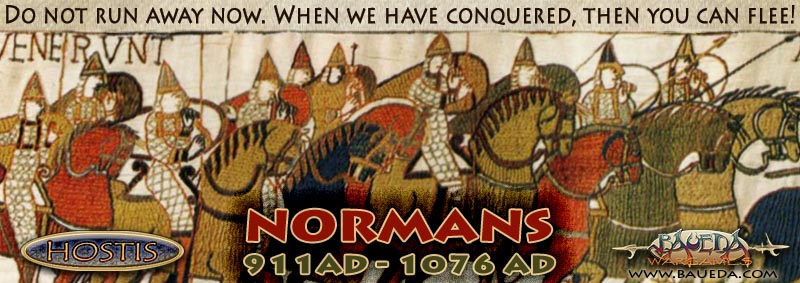
|
||
|
By the end of 800 the Vikings had ravaged northern France to such an extent that there was little plunder left. In the course of the next century their raiding encampments gradually evolved into permanent settlements along the Atlantic coast. These early Viking contingents included Danes, Norwegians, Hiberno-Norse, Orkney Vikings, as well as Anglo-Danes from the English Danelaw. They settled the territory and quickly merged with the native population of mostly Frankish and Gallo-Roman stock. In 911 a Danish Viking Army under a leader called Hrolf arrived to pillage the lower Seine Valley; his army was such a threat that Charles, King of the Franks, negotiated a treaty at St. Clair-sur-Epte. Under this treaty all the land bounded by the rivers Brestle, Epte, Avre and Dives was granted to the Danes; effectively the land they already controlled anyway. This range has been mostly sculpted by M. Campagna and currently cover all core troops but we plan to expand it even further at some point with the addition of yet more packs, including everything needed for the first Crusade and some characters! |
|
 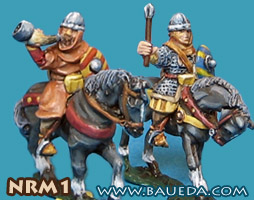 Figures sculpted by M. Campagna Samples painted by Artur |
| Code:NRM7 15mm Norman milites Charging with separate lance (Separate horse, riders and lances) Milites charging in the classical poses depicted on the Bayeux tapestry! Normally Normans would charge in a solid line with the horses as close to each other as possible and lance leveled, but when facing a solid shieldwall like at Hasting they would instead close in individually and hurl their lances from a distance before turning and galloping away. Pack of 4 mounted figures (three different poses): EURO€ 4.90 All figures do not contain lead and are sold unpainted! |
  Figures sculpted by M. Campagna Samples painted by Artur |
|
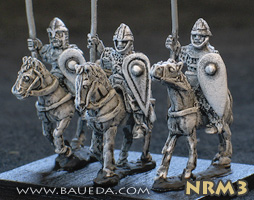 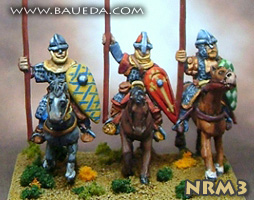 Figures sculpted by M. Campagna Samples painted by Artur |
|
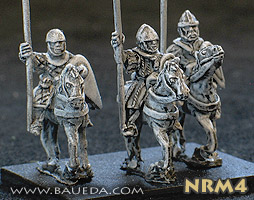 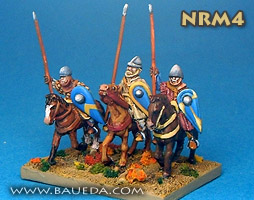 Figures sculpted by M. Campagna Samples painted by Artur |
|
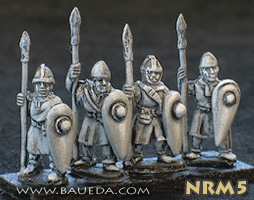 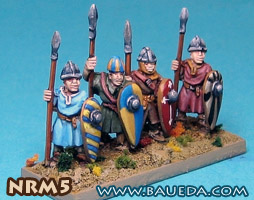 Figures sculpted by M. Campagna Samples painted by Artur |
|
 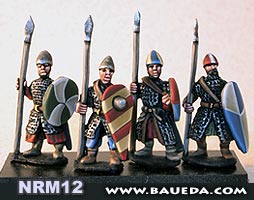 Figures sculpted by M. Campagna Samples painted by Ruben Torregrosa |
|
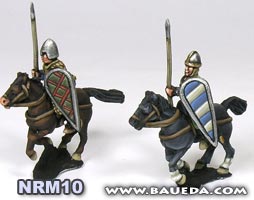 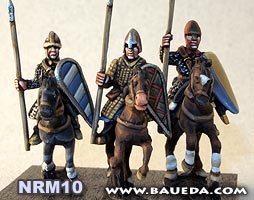 Figures sculpted by M. Campagna Samples painted by Ruben Torregrosa |
|
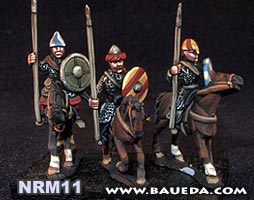 Figures sculpted by M. Campagna Samples painted by Ruben Torregrosa |
|
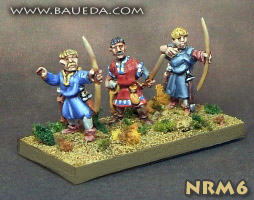 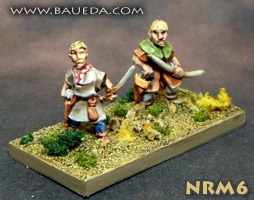 Figures sculpted by M. Campagna Samples painted by Artur |
|
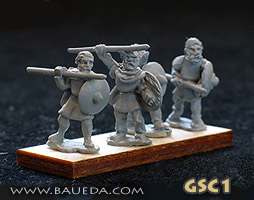
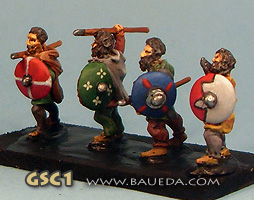 Figures sculpted by M. Campagna Samples painted by Artur |
|
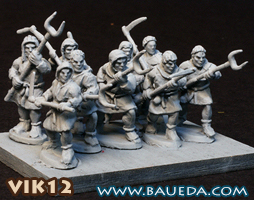 Figures sculpted by C. Berni Painted sample will be available shortly! |
| 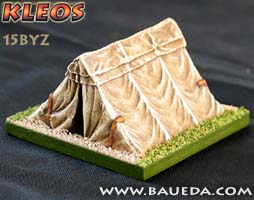 |
|
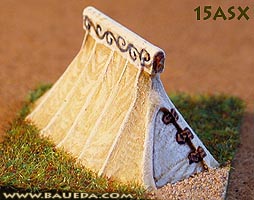 |
|
Code: FOG1 15mm Norman Fortified Camp 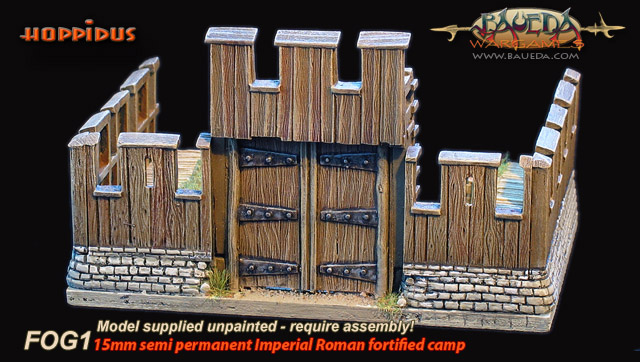
This is a fortified camp sets based on our "HOPPIDUS" modular system for ancient fortifications and designed specifically to be suitable for FOG or DBMM. The set contains a selection of modules that let you create a 120x80mm Norman Fortified Camp. As such it is also perfect for any Dark Age fort including Late Imperial Roman fortification, such as a Saxon Shore or a Limes semi-permanent fort! The complete set consist of a base formed by two sections of embankment, (each with its own timber stockade) which leave a full module frontage (40mm) gap, and a wooden barred gate of the same frontage to close the gap itself. On this base rest a separate wooden superstructure to defend the gate, which include a pontoon, a frontal parapet and two side support structures with access ladders nailed on. This set include all the modules required to make a camp large enough to hold several elements of troops either on the pontoon or on the walkway and in the courtyard there is plenty of space even for baggage or artillery. It includes 16 parts and assembly instructions; painting examples are available on this page, just click the small thumbnails on the top right. Please note that the kit does not contain enough elements to make a completely enclosed circuit and does not include an MDF base like that shown in the picture! We suggest to use one as it add strength to the model, but it is optional really, the model will stand up by itself and does not require basing. To make an enclosed fortified perimeter that can be used for a scenario game or even as a Build Up Area you can also add more elements from the complete HOPPIDUS range to expand and customize this basic set, for example adding a HOP4 - modular Late Imperial Roman Fortification set or using two FOG1 back to back. Just remember you can pick and choose any combination of modules you like, and we're here to help you at any time, so just e-mail us for any special requirements! |


  |
|